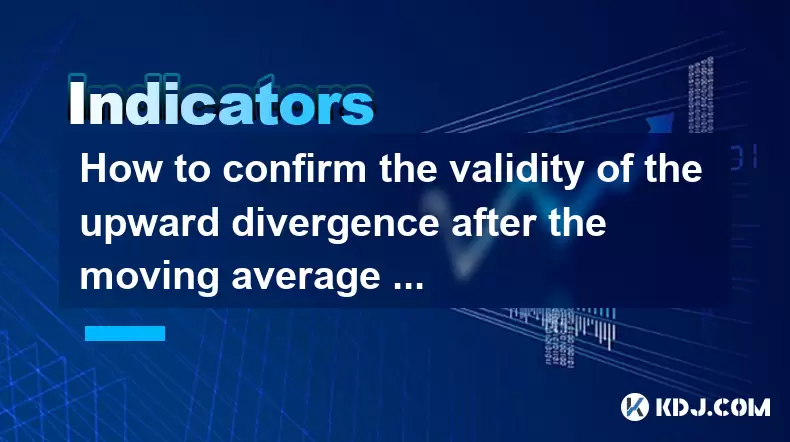-
 Bitcoin
Bitcoin $106,754.6083
1.33% -
 Ethereum
Ethereum $2,625.8249
3.80% -
 Tether USDt
Tether USDt $1.0001
-0.03% -
 XRP
XRP $2.1891
1.67% -
 BNB
BNB $654.5220
0.66% -
 Solana
Solana $156.9428
7.28% -
 USDC
USDC $0.9998
0.00% -
 Dogecoin
Dogecoin $0.1780
1.14% -
 TRON
TRON $0.2706
-0.16% -
 Cardano
Cardano $0.6470
2.77% -
 Hyperliquid
Hyperliquid $44.6467
10.24% -
 Sui
Sui $3.1128
3.86% -
 Bitcoin Cash
Bitcoin Cash $455.7646
3.00% -
 Chainlink
Chainlink $13.6858
4.08% -
 UNUS SED LEO
UNUS SED LEO $9.2682
0.21% -
 Avalanche
Avalanche $19.7433
3.79% -
 Stellar
Stellar $0.2616
1.64% -
 Toncoin
Toncoin $3.0222
2.19% -
 Shiba Inu
Shiba Inu $0.0...01220
1.49% -
 Hedera
Hedera $0.1580
2.75% -
 Litecoin
Litecoin $87.4964
2.29% -
 Polkadot
Polkadot $3.8958
3.05% -
 Ethena USDe
Ethena USDe $1.0000
-0.04% -
 Monero
Monero $317.2263
0.26% -
 Bitget Token
Bitget Token $4.5985
1.68% -
 Dai
Dai $0.9999
0.00% -
 Pepe
Pepe $0.0...01140
2.44% -
 Uniswap
Uniswap $7.6065
5.29% -
 Pi
Pi $0.6042
-2.00% -
 Aave
Aave $289.6343
6.02%
What should I do if the KD indicator crosses in the oversold zone but the rebound is weak?
A weak rebound after an oversold KD crossover in crypto often signals lack of buying momentum, requiring confirmation from volume, RSI, or candlestick patterns before trading.
Jun 21, 2025 at 07:07 am

Understanding the KD Indicator and Its Role in Crypto Trading
The KD indicator, also known as the stochastic oscillator, is a momentum-based technical analysis tool commonly used in cryptocurrency trading. It consists of two lines — the %K line and the %D line — that fluctuate between 0 and 100. The primary function of this indicator is to identify overbought or oversold conditions in an asset's price movement.
When the KD indicator crosses in the oversold zone (typically below 20), it suggests that the asset may be undervalued and could experience a potential upward reversal. However, in volatile markets like cryptocurrencies, such signals can often be misleading. Traders must not rely solely on this crossover without further confirmation from other tools and market context.
Important: A weak rebound after an oversold KD crossover indicates that buying pressure may not be strong enough to reverse the downtrend.
Analyzing Why the Rebound Might Be Weak
A weak rebound following an oversold KD crossover can occur due to several factors:
- Market Sentiment: In crypto markets, sentiment plays a crucial role. If the broader market remains bearish, even an oversold signal might not trigger a strong rally.
- Volume Analysis: If there’s no significant increase in trading volume during the crossover, it implies lack of interest from buyers.
- Price Action Confirmation: Sometimes, price fails to form bullish candlestick patterns despite the KD crossing upwards, indicating weakness.
- Strong Resistance Levels: Even if the indicator suggests a reversal, resistance zones can cap any potential upside.
In such cases, traders should look beyond the KD signal and incorporate additional indicators like moving averages, RSI, or volume profiles to confirm whether the bounce has real strength behind it.
Steps to Take When Facing a Weak Rebound After Oversold Crossover
If you observe that the KD indicator has crossed in the oversold area but the price isn’t responding strongly, consider the following actions:
- Wait for Further Confirmation: Do not rush into a trade based solely on the KD signal. Wait for a clear bullish pattern or a breakout above key resistance levels.
- Check Volume Trends: Look at the volume chart alongside the price. A meaningful rally usually comes with increased volume.
- Use RSI for Convergence Check: Compare the Relative Strength Index (RSI) with price action. If both are moving in opposite directions, it may indicate hidden weakness.
- Monitor Key Support Zones: If the price continues to hover near major support levels, it may still offer a valid entry point once confirmed by other tools.
- Avoid Overtrading: Entering multiple trades based on weak signals can lead to losses. Discipline is essential in such scenarios.
Important: Patience and risk management are critical when dealing with false or weak signals in crypto trading.
How to Combine Other Indicators With KD for Better Accuracy
Relying solely on the KD indicator can lead to false positives. To improve accuracy, consider combining it with other tools:
- Moving Averages: Use the 50-period and 200-period moving averages to determine trend direction. If the price is below these levels, a bullish KD signal may not be reliable.
- MACD (Moving Average Convergence Divergence): Check if the MACD line crosses above the signal line and whether the histogram confirms positive momentum.
- Bollinger Bands: Observe how price behaves near the lower band. If it touches the band but fails to rebound, it might indicate continued selling pressure.
- Candlestick Patterns: Bullish reversal patterns like hammer, morning star, or bullish engulfing can provide better confirmation than the KD alone.
- Volume Indicators: Tools like OBV (On-Balance Volume) or Chaikin Money Flow can help assess whether accumulation is happening.
Using multiple indicators helps filter out noise and increases the probability of successful trades.
Setting Realistic Expectations and Managing Risk
When the KD indicator gives an oversold signal but the rebound is weak, managing expectations becomes crucial. Understand that not every signal will result in a profitable trade. Set realistic goals and define your risk parameters before entering any position.
Here’s how to manage risk effectively:
- Set Stop Losses: Place stop-loss orders below recent swing lows to limit downside risk.
- Use Position Sizing: Allocate only a small percentage of your portfolio to each trade to avoid large drawdowns.
- Define Exit Points: Have clear take-profit levels based on previous resistance or Fibonacci extensions.
- Maintain a Trading Journal: Record every trade, including why you entered, what signals you saw, and how it played out.
- Review Your Strategy Periodically: Analyze your performance regularly to refine your approach and eliminate ineffective strategies.
Important: Proper risk management is more important than chasing every signal in the crypto market.
Frequently Asked Questions
Q: Can I use the KD indicator alone for making trading decisions in crypto?
While the KD indicator provides useful insights into overbought and oversold conditions, relying solely on it can lead to false signals, especially in highly volatile crypto markets. It’s best used in combination with other technical tools and price action analysis.
Q: How do I know if the rebound after an oversold KD crossover is genuine?
Look for confluence with other indicators such as increasing volume, bullish candlestick patterns, or positive divergences in RSI or MACD. Genuine rebounds usually come with visible signs of buyer interest.
Q: Should I ignore all oversold KD signals during a strong downtrend?
Not necessarily. Oversold conditions can persist in strong trends. However, you should wait for signs of trend exhaustion or reversal before acting on such signals. Avoid counter-trend trading unless there’s strong confirmation.
Q: What timeframes are most suitable for using the KD indicator in crypto trading?
The KD indicator works across different timeframes, but it tends to produce more reliable signals on higher timeframes like 4-hour or daily charts. Lower timeframes can generate more noise and false signals.
Disclaimer:info@kdj.com
The information provided is not trading advice. kdj.com does not assume any responsibility for any investments made based on the information provided in this article. Cryptocurrencies are highly volatile and it is highly recommended that you invest with caution after thorough research!
If you believe that the content used on this website infringes your copyright, please contact us immediately (info@kdj.com) and we will delete it promptly.
- Hack token plunges amidst hack SuSpicions: a Peckshield Alert
- 2025-06-21 10:25:11
- Gaming Tokens, Social Activity, and the Rise of APE & FLOKI: Who's Winning the Game?
- 2025-06-21 10:30:12
- England vs. India: A New Era Dawns in Test Cricket
- 2025-06-21 08:25:12
- Wyoming, Aptos, Sei: Pioneering the Future of Stablecoins
- 2025-06-21 08:45:12
- XRP Millionaire by 2040: A Realistic Dream?
- 2025-06-21 08:45:12
- JPMorgan, Shopify, and Ethereum Base: A New Era of On-Chain Finance
- 2025-06-21 09:05:12
Related knowledge

Does the sudden contraction of ATR indicate the end of the trend?
Jun 20,2025 at 11:14pm
Understanding ATR and Its Role in Technical AnalysisThe Average True Range (ATR) is a technical indicator used to measure market volatility. Developed by J. Welles Wilder, ATR calculates the average range of price movement over a specified period, typically 14 periods. It does not indicate direction—only volatility. Traders use ATR to gauge how much an ...

Is it invalid if the DMI crosses but the ADX does not expand?
Jun 21,2025 at 09:35am
Understanding the DMI and ADX RelationshipIn technical analysis, the Directional Movement Index (DMI) consists of two lines: +DI (Positive Directional Indicator) and -DI (Negative Directional Indicator). These indicators are used to determine the direction of a trend. When +DI crosses above -DI, it is often interpreted as a bullish signal, while the opp...

Is the trend continuation when the Williams indicator is oversold but there is no rebound?
Jun 20,2025 at 11:42pm
Understanding the Williams %R IndicatorThe Williams %R indicator, also known as the Williams Percent Range, is a momentum oscillator used in technical analysis to identify overbought and oversold levels in price movements. It typically ranges from 0 to -100, where values above -20 are considered overbought and values below -80 are considered oversold. T...

Is the golden cross of the ROC indicator below the zero axis effective?
Jun 20,2025 at 09:42pm
Understanding the ROC Indicator and Its Role in Cryptocurrency TradingThe Rate of Change (ROC) indicator is a momentum oscillator widely used by traders to assess the speed at which cryptocurrency prices are changing. It measures the percentage difference between the current price and the price from a certain number of periods ago. The ROC helps identif...

How to confirm the validity of the upward divergence after the moving average sticks together?
Jun 21,2025 at 01:36am
Understanding the Basics of Moving Averages and DivergenceIn technical analysis, moving averages are crucial tools used to smooth out price data over a specified time period. When multiple moving averages converge or 'stick together,' it often indicates a consolidation phase in the market. This phenomenon can be a precursor to significant price movement...

What should I do if the KD indicator crosses in the oversold zone but the rebound is weak?
Jun 21,2025 at 07:07am
Understanding the KD Indicator and Its Role in Crypto TradingThe KD indicator, also known as the stochastic oscillator, is a momentum-based technical analysis tool commonly used in cryptocurrency trading. It consists of two lines — the %K line and the %D line — that fluctuate between 0 and 100. The primary function of this indicator is to identify overb...

Does the sudden contraction of ATR indicate the end of the trend?
Jun 20,2025 at 11:14pm
Understanding ATR and Its Role in Technical AnalysisThe Average True Range (ATR) is a technical indicator used to measure market volatility. Developed by J. Welles Wilder, ATR calculates the average range of price movement over a specified period, typically 14 periods. It does not indicate direction—only volatility. Traders use ATR to gauge how much an ...

Is it invalid if the DMI crosses but the ADX does not expand?
Jun 21,2025 at 09:35am
Understanding the DMI and ADX RelationshipIn technical analysis, the Directional Movement Index (DMI) consists of two lines: +DI (Positive Directional Indicator) and -DI (Negative Directional Indicator). These indicators are used to determine the direction of a trend. When +DI crosses above -DI, it is often interpreted as a bullish signal, while the opp...

Is the trend continuation when the Williams indicator is oversold but there is no rebound?
Jun 20,2025 at 11:42pm
Understanding the Williams %R IndicatorThe Williams %R indicator, also known as the Williams Percent Range, is a momentum oscillator used in technical analysis to identify overbought and oversold levels in price movements. It typically ranges from 0 to -100, where values above -20 are considered overbought and values below -80 are considered oversold. T...

Is the golden cross of the ROC indicator below the zero axis effective?
Jun 20,2025 at 09:42pm
Understanding the ROC Indicator and Its Role in Cryptocurrency TradingThe Rate of Change (ROC) indicator is a momentum oscillator widely used by traders to assess the speed at which cryptocurrency prices are changing. It measures the percentage difference between the current price and the price from a certain number of periods ago. The ROC helps identif...

How to confirm the validity of the upward divergence after the moving average sticks together?
Jun 21,2025 at 01:36am
Understanding the Basics of Moving Averages and DivergenceIn technical analysis, moving averages are crucial tools used to smooth out price data over a specified time period. When multiple moving averages converge or 'stick together,' it often indicates a consolidation phase in the market. This phenomenon can be a precursor to significant price movement...

What should I do if the KD indicator crosses in the oversold zone but the rebound is weak?
Jun 21,2025 at 07:07am
Understanding the KD Indicator and Its Role in Crypto TradingThe KD indicator, also known as the stochastic oscillator, is a momentum-based technical analysis tool commonly used in cryptocurrency trading. It consists of two lines — the %K line and the %D line — that fluctuate between 0 and 100. The primary function of this indicator is to identify overb...
See all articles

























































































